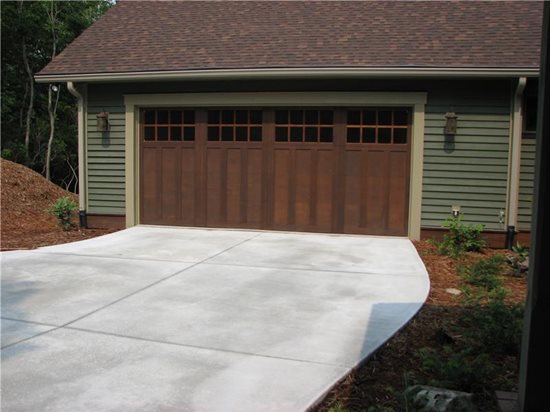- Staining Concrete
- Stamped Concrete
- Concrete Overlays
- Concrete Resurfacing
- Concrete Polishing
- Concrete Dyes
- Colored Concrete
- Indoor Concrete
- Concrete Floors
- Concrete Countertops
- Garage Floor Coatings
- Furniture, Sinks, Fire Bowls
- Basement Floors
- Outdoor Concrete
- Concrete Patios
- Concrete Driveways
- Concrete Pool Decks
- Outdoor Kitchens & Counters
- Outdoor Fireplace
- Concrete Walkways
- Concrete Pavers
- Concrete Walls
- Repair & Maintenance
- Foundation Repair
- Concrete Crack Repair
- Concrete Sealers
- Building with Concrete
- Concrete Homes
- Concrete Basements
- Decorative Concrete
- Fire Resistant
Plain Concrete
Installation and maintenance tips for concrete that is uncolored and without decorative enhancementNot all concrete warrants decorative coloring or patterning, although both can significantly embellish the look of the concrete surface as well as hide blemishes. Plain, gray concrete is still the most common surface installed, whether for reasons of economy or a desire for a functional, unadulterated surface with a timeless appearance. But even when concrete is not going to be colored, textured or patterned, proper installation and maintenance are key to achieving good results. Whether you are pouring conventional concrete or decorative colored concrete, the same standard installation practices apply.
Find a Local Concrete Contractor for: Driveways, Patios, or Pool Decks
Installing Concrete
Pouring Concrete: Nine basic steps involved in residential concrete placement
Maintaining Plain Concrete
Maintenance requirements for plain concrete (with broomed or textured finish)
Plain Concrete Cost
Ways to Spruce Up Plain Concrete
Adding color with integral pigments and color hardeners, and concrete stains
Adding texture with stamped concrete
Adding patterns with stenciling and engraving
Simple ways to add flair with exposed aggregate
Adding a rock salt finish





